Can You Grind Coffee Beans in a Blender? Here’s the Complete Guide for Coffee Lovers
If you’re craving a fresh cup of coffee but don’t have a grinder on hand, you might be thinking: can you grind coffee beans in a blender?
At Bazan Coffee, we believe great coffee starts with smart choices-from bean to brew.
Let’s make sure your next cup is as satisfying as it deserves to be-no matter what tools you have.
Freshly Ground Coffee Makes All the Difference
Coffee experts agree: grinding beans right before brewing maximizes aroma, flavor, and complexity.
According to SCA’s 2023 Coffee Freshness Report:
"Pre-ground coffee loses up to 60% of its aromatic compounds within 15 minutes of grinding at room temperature."
But what if you don’t own a dedicated burr grinder? Can a simple kitchen blender do the job?
The answer is yes-but with important caveats.
Can You Grind Coffee Beans in a Blender? Quick Answer: Yes-with Care
You can grind coffee beans in a blender if you:
-
Use the right technique
-
Understand the limitations
-
Adapt your brew method accordingly
Barista Hustle’s 2022 Brewing Flexibility Study notes:
"While not ideal for consistent particle size, blenders can produce usable coffee grounds for certain brewing styles when no grinder is available."
Let’s walk through it carefully.

How to Grind Coffee Beans in a Blender (Step-by-Step)
1. Choose the Right Blender
-
High-speed blenders (like Vitamix, Blendtec, Ninja) work best.
-
Basic household blenders can work but may heat up and damage delicate coffee oils if overused.
2. Use Pulse Mode
-
Set your blender to pulse, not continuous blending.
-
Short bursts of 2-5 seconds give you more control over grind size.
Continuous blending can:
-
Overheat the coffee
-
Pulverize beans unevenly
-
Create too much fine powder (bad for certain brewing methods)
3. Blend Small Batches
-
Work with ¼ cup to ½ cup of beans at a time.
-
Smaller batches allow for better circulation and more even grinding.
4. Shake or Stir Between Pulses
-
Gently tilt or shake the blender between pulses.
-
This redistributes larger beans and prevents uneven grind sizes.
CQI’s Grinding Techniques Research advises:
"Redistribution during manual grinding processes minimizes particle size inconsistencies."
5. Monitor Your Grind Size
Ideal grind size depends on your brewing method:
-
Coarse (like sea salt): French press, cold brew
-
Medium (like sand): Drip coffee, pour-over
-
Fine (like table salt): Espresso (hard to achieve consistently with a blender)
Bazan Tip:
Blenders are best for coarse to medium grinds, not fine espresso or Turkish grinds.

Pros and Cons of Using a Blender to Grind Coffee
|
Pros |
Cons |
|
Convenient when no grinder is available |
Inconsistent grind size |
|
Quick and easy |
Possible bean overheating if misused |
|
Suitable for French press, cold brew, drip methods |
Not suitable for espresso or pour-over perfectionists |
Best Brew Methods When Grinding Coffee with a Blender
Since blender grinding produces more variation in particle size, it pairs best with forgiving brew methods:
-
French Press
(Tolerates coarse and slightly uneven grinds.) -
Cold Brew
(Steeping minimizes the impact of grind inconsistency.) -
Drip Coffee Makers
(Acceptable with careful monitoring of grind size.)
FAQs: Coffee Grinding and Blenders - What You Need to Know
Is it bad for coffee quality to use a blender?
Not necessarily.
Freshly ground, even if imperfect, beats stale pre-ground coffee.
Can I grind espresso beans in a blender?
Technically yes-but achieving the extremely fine, uniform grind needed for espresso is difficult with a blender.
For espresso, a burr grinder is strongly recommended.
How can I improve blender grinding results?
-
Pulse gently.
-
Blend small amounts at a time.
-
Use a sieve afterward to filter out overly fine particles if needed.
Does grinding beans in a blender damage the coffee flavor?
Overheating can degrade delicate coffee oils and aromatics.
Pulse mode and short blending times minimize this risk.
How Bazan Coffee Supports Better Grinding (Even in a Blender)
At Bazan Coffee, we roast and source beans with:
-
Consistent size and density, helping even manual or blender grinding
-
Low-moisture content, reducing clumping during grinding
-
Specialty-grade flavor integrity, so even slightly uneven grinds still deliver full-bodied taste
Whether you're blending for a French press session or improvising a cold brew batch, Bazan’s coffees maintain richness, clarity, and complexity.
Can You Grind Coffee Beans in a Blender? Yes-With Smart Technique
So, can you grind coffee beans in a blender?
Yes-you can, and with the right care, you’ll still enjoy a fantastic cup of coffee.
Just remember:
-
Use pulse mode.
-
Blend small batches.
-
Opt for coarse or medium brewing methods.
-
Sip with confidence.
And when you start with Bazan’s premium beans, even the simplest methods deliver extraordinary flavor.
Brew Brighter. Grind Smarter. Elevate Every Sip with Bazan Coffee.
Explore Bazan’s blender-friendly brews:
-
Specialty Arabica – Cầu Đất - Smooth, low-acid Arabica ideal for cold brew and French press.
-
Special Vietnam Blend - Balanced, bold body for drip or manual brewing.
-
Fine Robusta - Krong Năng - Bold flavors that withstand versatile brewing methods.
Trust your beans. Trust your brew. Choose Bazan Coffee.




